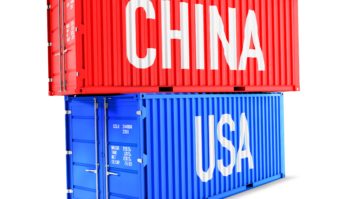At the invitation and as a guest of the Consumer Electronics Association (CEA), I attended SINOCES last week, of which the CEA is the overseas sponsor.
As this was my first trip to China, I expected to be schooled in all things CE, and while I learned a lot, the most important lessons had only a little to do with new products.
To start with, pumpkin juice tastes terrible; Chinese real estate development is both booming and dead (at the same time); and, finally, economic events in China are moving at an unprecedented rate and that nation is in for a major shift in how its economy operates.
While the show is small in scale compared to International CES, it was still quite interesting. Not so much for the products on hand, but because the devices were representative of what the Chinese domestic consumer desires. SINOCES is geared toward the Chinese market.
Yes, LCD TVs, laptops and smartphones were in abundance, but just as prevalent were major appliances. And this makes perfect sense.
As one drives through any Chinese city, and Qingdao where SINOCES was held is no exception, all you see are cranes and buildings being constructed at a breakneck pace. So naturally all these new dwellings will need to be furnished with the latest kitchen and clothes washing gadgets.
Sure, LCD TVs and the rest will also be needed to fit out a new home, but appliances will be first on the shopping list of new Chinese homeowners.
Unlike their American counterparts, who desire sleek, monochrome designs for their kitchen appliances, the folks in China are quite a bit more adventurous. This was most obvious in the funky-looking microwaves that open from the top to refrigerators that appear to have a texture embossed on their outside. Bright colors were also big, not just white or stainless steel like in America.
Now with that said, there are thousands upon thousands of housing and office units that are either completed yet empty, or half-constructed and abandoned in Qingdao. This may be a strong indicator that the Chinese economy is not going to be the driving force behind world commerce in the years to come, but that is a topic for another blog.
Another indicator at the show of the growing wealth in this nation of 1.4 billion was the large number of smaller appliances, like juicers, coffee grinders and the always-ubiquitous rice makers: things you might like to have, but don’t really need.
I’m sure 10 years ago a juicer was not on any shopper’s radar here, but now there is enough loose change in people’s pockets to make such a purchase.
One warning on the juice makers: Don’t follow the recipes that come included with the device. For some reason, the Chinese think steaming hot, mushed pumpkin is a good drink. I was handed a small amount on the show floor and thinking it was orange juice, slugged it down. Don’t be fooled; it’s not tasty. It took hours and I brushed my teeth twice to wash away the flavor. And to think Harry Potter and his friends drink this stuff all the time …
The only other thing that was almost as disgusting as pumpkin juice was baiju — essentially Chinese moonshine. Drinking it is pretty rough, but at least I expected it to be.
Outside of the products on the show floor, the most interesting tidbits of information came via the U.S. embassy in Beijing and its office of Commercial Services.
These folks help U.S. companies make connections in China and work their way through the maze-like Chinese bureaucracy.
Dale Wright from the Commercial Services office gave a talk on the Chinese economy, with the major takeaway being that the Chinese government is already looking toward the day in the not too distant future when the country moves away from being a manufacturing based economy to one of services like the U.S, and Japan. This statement took me by surprise. It took Europe, the U.S. and Japan decades to make this leap, but China could do it in 20 or so years, and the urban areas of China are literally covered with factories right now.
However, Wright pointed to rising worker salaries and demands for better working conditions as indicators that having an entire economy based on cheap labor is not going to last long. He said everything simply happens faster in China.
I guess the next question is where is the next large pool of cheap labor that can accommodate high-tech manufacturing?













